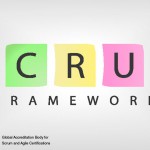IMPLEMENT
The Implement phase is related to the execution of the tasks and activities to create a project’s product. These activities include creating the various deliverables, conducting daily standup meetings, and grooming (i.e., reviewing, fine-tuning, and regularly updating) the product backlog at regular intervals.
Implement, as defined in the Scrum Body of Knowledge (SBOK™), is applicable to the following:
- Portfolios, programs, and/or projects in any industry
- Products, services, or any other results to be delivered to stakeholders
- Projects of any size or complexity
The term “product” in this Body of Knowledge may refer to a product, service, or other deliverable. Scrum can be applied effectively to any project in any industry—from small projects or teams with as few as six team members to large, complex projects with up to several hundred team members.
To facilitate the best application of the Scrum framework, this chapter identifies inputs, tools, and outputs for each process as either “mandatory” or “optional.” Inputs, tools, and outputs denoted by asterisks (*) are mandatory, whereas those with no asterisks are optional.
It is recommended that the Scrum Team and those individuals being introduced to the Scrum framework and processes focus primarily on the mandatory inputs, tools, and outputs; while Product Owners, Scrum Masters, and other more experienced Scrum practitioners strive to attain a more thorough knowledge of the information in this entire chapter. It is also important to realize that although all processes are defined uniquely in the SBOK™, they are not necessarily performed sequentially or separately. At times, it may be more appropriate to combine some processes, depending on the specific requirements for each project.
This chapter is written from the perspective of one Scrum Team working on one Sprint to produce potentially shippable Deliverables as part of a larger project. However, the information described is equally applicable to entire projects, programs, and portfolios. Additional information pertaining to the use of Scrum for projects, programs, and portfolios is available in chapters 2 through 7, which cover Scrum principles and Scrum aspects.
Create Deliverables
In this process, the Scrum Team works on the tasks in the Sprint Backlog to create Sprint Deliverables. A Scrumboard is often used to track the work and activities being carried out. Issues or problems being faced by the Scrum Team could be updated in an Impediment Log.







